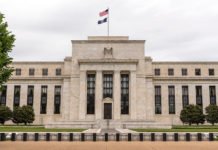Inflation is strengthening, as evidenced by the solid gains in headline and core CPI in January. Core inflation is rising at a 2.9 percent pace over the past three months and will lead to further Fed hikes in the coming months.
Rising Costs of Consumer Staples
Consumer price inflation is turning up again. The CPI advanced ahead of expectations in January, rising 0.5 percent. That pushed inflation up 2.1 percent from a year earlier, but prices over the past three months have increased at a 4.4 percent annualized rate.
Headline inflation was lifted by higher energy costs in January. Gasoline prices rose 5.7 percent, which more than offset a 0.8 percent pullback for energy services even as colder weather gripped more populated parts of the country. The rebound in oil prices over the past couple years has been an important factor pulling inflation higher; the energy index is up 5.5 percent since last January.
Food prices have been less supportive of the pickup in inflation, but prices are also moving higher. Grocery prices increased 0.1 percent, which was enough to push the year-over-year rate to its highest reading since early 2015. Food away from home posted an even larger gain of 0.4 percent, as higher labor costs finally look to be pushing restaurants to raise prices.
Has Pricing Power Finally Arrived?
The real strength in today’s report came from the core index, where prices rose 0.3 percent. That was the largest gain since last January. Core goods prices rose for a second consecutive month amid a rebound in apparel and used vehicle prices. Services posted widespread gains, led by higher medical and insurance costs.
In recent years, January readings of core inflation seemed to get a bump from "residual seasonality" (the inability for adjustments to fully account for typical seasonal patterns). However, updated seasonal factors released last week better capture the tendency for firms to raise prices early in the year. Therefore, we are more inclined to take today’s increase at face value as a sign of genuine strengthening in inflation.
Over the past year, core inflation has increased 1.8 percent. That is unchanged from December, but the recent trend is stronger. Over the past three months, core CPI has increased at a 2.9 percent annualized rate, suggesting the year-over-year rates will be picking up in the coming months. We look for core CPI to move back up to 2 percent on a year-ago basis as early as March, when last year’s drop in cell phone services makes for an easier base comparison.
The core PCE deflator, more closely watched by the Fed, will take longer to return to 2 percent, but should also rise in the coming months. Even though core PCE will still be undershooting the FOMC’s target in the coming months, the upward trend should be enough for the Fed to continue on with its tightening campaign. We continue to look for the FOMC to raise rates in March, followed by two additional hikes later in the year.















